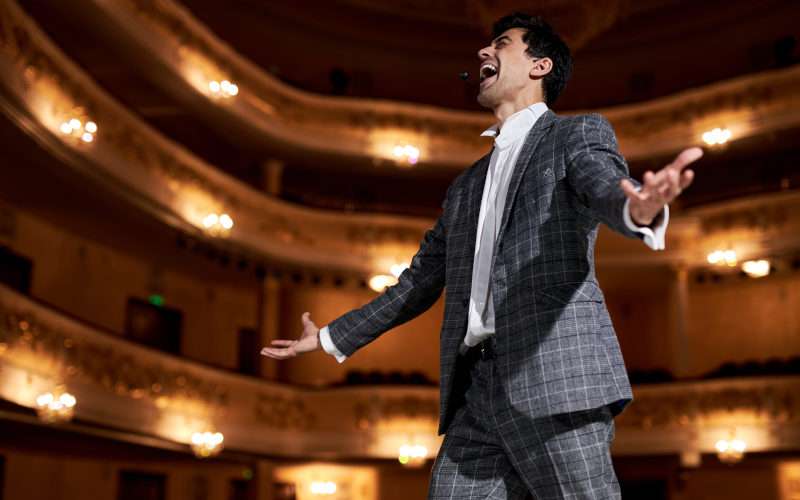In this article, we will delve deep into the various singing voice types, providing you with detailed descriptions of each type. This knowledge will help you identify your own voice type, and also allow you to appreciate the unique qualities of other singers.
The voice types can be broadly divided into male and female categories, with each having further specific classifications based on vocal range, tessitura, and vocal qualities. For men, we have bass, baritone, and tenor voice types, while for women, the types include alto, contralto, mezzo-soprano, and soprano. Additionally, there are certain voices that fall outside of these primary categories such as countertenor, which we will discuss as well.
Understanding Voice Types
When exploring singing, it’s important to identify and understand the different voice types. There are six basic voice types, each with their own unique range, timbre, and tessitura. These characteristics help determine which vocal category you may fit into, making it easier for you to develop your singing abilities.
Bass
As the lowest male voice type, bass vocals are characterized by a deep, rich sound and typically have a tessitura of around E2-E4. People with a bass voice can create a powerful rumble across two octaves.
Known for their deep and powerful tones, bass singers are quite rare and often sought after for low harmony parts in ensembles. It’s worth noting that real bass singers are quite rare.
Some famous bass singers include Barry White, Avi Kaplan, and Paul Robeson.
Baritone
This is the most common male voice type, falling between bass and tenor.
Baritones have a rich and warm tone, with a vocal range that usually spans from around A2 to A4. Baritones are versatile singers, frequently taking on lead roles in musical theater, opera, and popular music.
Many popular singers like Frank Sinatra and Elvis Presley were baritones.
Tenor
Tenors have a higher range than baritone and possess a vocal range of about C3 to C5.
Their voices often sound bright and strong, with a powerful high register. This voice type is popular in many genres, from opera to pop music, because of its bright, resonant quality. Tenors are often given lead roles in musical theater and operas due to their powerful and emotional singing abilities.
Great examples of tenor singers include Freddie Mercury, Plácido Domingo and Luciano Pavarotti.
Alto (contralto)
As one of the lower female voice types, altos have a darker and more resonant sound than sopranos. They typically have a vocal range of F3 to F5.
This voice type is often used for harmonies and supporting roles in choirs and ensembles.
Some famous alto singers are Etta James, Adele, Annie Lennox, Tracy Chapman, Alison Moyet.
Mezzo-Soprano
This voice type is the midpoint for female singers, falling between alto and soprano. Mezzo-sopranos have a vocal range of approximately A3 to A5. They often have a smooth and versatile tone.
Mezzo-sopranos often excel in both operatic roles and choral music, providing depth and balance to an ensemble.
Famous mezzo-sopranos include Beyoncé and Sarah Vaughan.
Soprano
As the highest female voice type, sopranos have a bright, clear sound and a vocal range from C4 to C6, or even higher. Soprano singers can hit powerful high notes with great agility.
Their voices can effortlessly navigate high and complex passages, making them a popular choice for lead roles in operas and choirs.
Mariah Carey and Whitney Houston are well-known sopranos.
Special Singing Categories

There are some unique singing categories that deserve mention. These voices possess certain qualities that make them stand out from the crowd.
Countertenor
A countertenor is a male singer who can extend his vocal range significantly higher than typical tenors. Their range typically falls between E3 and E5, taking on a similar range to a female alto or mezzo-soprano. Using a falsetto or head voice, countertenors can achieve a light and ethereal sound. Some famous countertenors include Philippe Jaroussky and Andreas Scholl.
Voice Classification Can Be More Fluid
In popular and contemporary music, voice classification can be more fluid. This means that singers often have the freedom to explore different vocal ranges or styles without being confined to a particular voice category. It allows for more creativity and experimentation in music, which often results in more unique and versatile performances.
You might come across some singers who have an unusual vocal range. These singers can span more than one traditional voice type. For instance, a male singer might possess a vocal range that covers both Tenor and Baritone, or a female singer might have a vocal range encompassing both Soprano and Mezzo-Soprano.
Having an extensive vocal range can be an asset, as it helps you be more versatile in your singing. You can perform songs written for different voice types, and that can be quite an impressive feat! However, it’s crucial to keep in mind that knowing your tessitura – the range where you sing most comfortably – is vital. Vocal range is not the only aspect that determines your voice type; other factors like vocal weight, bridge location, timbre, and physical characteristics also play a role.
Some famous singers with an unusually wide vocal range include Freddie Mercury, Mariah Carey, and Axl Rose. These artists have been known for their exceptional ability to span several traditional voice types, making them stand out in the music industry.
However, it’s essential not to push your voice too hard, as this can strain your vocal cords and potentially damage your singing voice. Remember to practice proper vocal techniques and consult a vocal coach for guidance in developing your singing abilities.
While an extensive vocal range may be impressive, it’s not a requirement for being a successful singer. What matters most is the unique qualities of your voice, your musicality, and your ability to connect with your audience.
So, whether you have a wide-ranging vocal ability or a more specific voice type, appreciate the beauty of your own singing voice and continue working on your craft.
Sources
Medium – How to Tell Your Voice Type: A Comprehensive Guide
Ramsey Voice Studio – The 8 Singing Voice Types: Find Out Yours Here!

